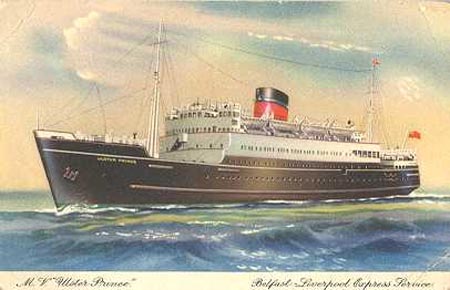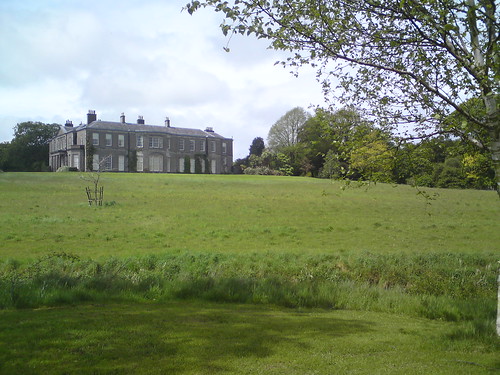Second son of the aforesaid Roger Boyle, by Joan, his wife, daughter of John Naylor, studied law at the Middle Temple; but, despairing of success, embarked for Ireland, as an adventurer, and having obtained, after suffering some persecutions from the local authorities, the favour and protection of ELIZABETH I, amassed considerable wealth, received the honour of knighthood, was sworn of the Privy Council, and elevated to the peerage of that kingdom, in 1616, in the dignity of Baron Boyle, of Youghal.
His lordship was advanced, in 1620, to the dignities of Viscount Dungarvan and EARL OF CORK.
 |
| The Rt Hon Sir Richard Boyle, 1st Earl of Cork (Wikipedia) |
He married firstly, in 1595, Joan, daughter and co-heiress of William Apsley, of Limerick, without surviving issue; and secondly, Catherine, daughter of Sir Geoffrey Fenton, Knight, principal secretary of state for Ireland, and had issue (with eight daughters),
Roger (1606-15);
RICHARD, his successor;
Geoffrey;
Lewis, created Viscount Boyle of Kinalmeaky;
ROGER, created Earl of Orrery; ancestor of John, 5th Earl of Cork;
Francis, created Viscount Shannon;
Robert.
His lordship was succeeded by his eldest son,
RICHARD, 2nd Earl (1612-98); who, having wedded, in 1635, the Lady Elizabeth Clifford, daughter and heiress of Henry, 5th Earl of Cumberland, was created a Peer of England, 1644, in the dignity of
Baron Clifford of Londesborough, Yorkshire; and, in 1664, EARL OF BURLINGTON.
He had issue,
Charles, 3rd Viscount Dungarvan (1639-94); father of the 3rd Earl of Cork;
Richard, died in 1665 at the battle of Lowestoft;
Frances; Elizabeth; Mary; Henrietta.
His lordship's eldest son having predeceased him, was succeeded by his grandson,
CHARLES (c1662-1704), 3rd Earl, and 2nd Earl of Burlington, who espoused Juliana, daughter and heiress of the Hon Henry Noel, of Luffenham, Rutland, by whom he had surviving issue,
RICHARD, his successor;
Elizabeth; Juliana; Jane; Henrietta.
 |
| Charles, 3rd Earl of Cork (The National Trust, Hardwick Hall) |
His lordship was succeeded by his only son,
RICHARD (1694-1753), 4th Earl of Cork and 3rd Earl of Burlington, KG, who married, in 1720, the Lady Dorothy Savile, elder daughter and co-heiress of William, 2nd Marquess of Halifax, by which lady he had three daughters,
Dorothy;
Juliana;
Charlotte Elizabeth, m William Cavendish, Marquess of Hartington.
His lordship claimed, in 1727, the barony of Clifford, as great-grandson of the Lady Elizabeth Clifford, daughter and heiress of Henry, Lord Clifford, and the house of peers acknowledged and confirmed his lordship's right thereto.
This nobleman was eminent as a munificent encourager of literature and the fine arts, and as a friend of Alexander Pope he will always be remembered.
His lordship died in 1753, and leaving an only surviving daughter, Lady Charlotte, who had wedded William, 4th Duke of Devonshire, and inherited the barony of Clifford; all his lordship's other English honours ceased, while those of Ireland devolved upon his kinsman,
JOHN BOYLE (1707-62), 5th Earl of Orrery, in Ireland; Baron Boyle of Marston, in Great Britain; as 5th EARL OF CORK (refer to Roger, third son of the first Earl of Cork).
His lordship wedded firstly, in 1728, the Lady Henrietta Hamilton, youngest daughter of George, 1st Earl of Orkney KT, and had issue,
Charles, Viscount Dungarvan (1729-1759);
HAMILTON, his successor;
Elizabeth.
He espoused secondly, Margaret, daughter and sole heiress of John Hamilton, by whom he had further issue,
EDMUND, 7th Earl of Cork;
Catherine Agnes; Lucy.
His lordship distinguished himself as a writer, and was a friend of
SWIFT.
He was succeeded by his eldest surviving son,
HAMILTON (1729-64), 6th Earl of Cork and Orrery, who died unmarried, in little more than a year after his father, when the honours devolved upon his brother,
EDMUND (1742-98), 7th Earl of Cork and Orrery, who married firstly, in 1764, Anne, daughter of Kelland Courtenay, and had issue,
John Richard, Viscount Dungarvan (1765-8);
EDMUND, of whom hereafter;
Courtenay (the Hon Sir), Vice-Admiral in the Royal Navy;
Lucy Isabella.
His lordship espoused secondly, in 1786, Mary, youngest daughter of John, 1st Viscount Galway, without further issue.
He was succeeded by his eldest surviving son,
EDMUND (1767-1856), 8th Earl of Cork and Orrery, KP, a General in the Army, who married, in 1795, Isabella Henrietta, third daughter of William Poyntz, of Midgam house, Berkshire, and had issue,
Edmund William, Viscount Dungarvan (1798-1826);
George Richard (1799-1810);
CHARLES, of whom presently;
John, ancestor of the 12th and 13th Earls;
Robert Edward;
Richard Cavendish;
Isabella Elizabeth; Lucy Georgina; Louisa.
His lordship's eldest surviving son,
CHARLES (1800-34), styled Viscount Dungarvan, wedded, in 1828, the Lady Catherine St Lawrence, daughter of William, 2nd Earl of Howth, and had issue,
RICHARD EDMUND ST LAWRENCE, his successor;
William George;
Edmund John;
Louisa Caroline Elizabeth; Mary Emily.
His lordship predeceased his father, and the family honours devolved upon his eldest son,
RICHARD EDMUND ST LAWRENCE (1829-1904), as 9th Earl of Cork and Orrery, KP, who married, in 1853, the Lady Elizabeth Charlotte de Burgh, daughter of Ulick John, 1st Marquess of Clanricarde, and had issue,
CHARLES SPENCER CANNING, his successor;
ROBERT JOHN LASCELLES, 11th Earl;
Emily Harriet Catherine; Grace Elizabeth; Isabel Lettice Theodosia; Honora Janet; Dorothy Blanche.
His lordship was succeeded by his elder son,
CHARLES SPENCER CANNING (1861-1925), 10th Earl, who wedded, in 1918, Mrs Rosalie Gray, daughter of William Waterman de Villiers, of Romsey, Hampshire, though the marriage was without issue, when the family honours devolved upon the 10th Earl's brother,
ROBERT JOHN LASCELLES (1864-1934), 11th Earl, who espoused, in 1890, Josephine Catherine, daughter of Jospeh P Hale; the marriage, however, was without issue, and the titles reverted to his lordship's cousin,
WILLIAM HENRY DUDLEY, 12th Earl (1873-1967), GCB, GCVO, Admiral of the Fleet in the Royal Navy, who married, in 1902, the Lady Florence Keppel, youngest daughter of William, 7th Earl of Albemarle, though the marriage was without issue, when the honours reverted to his cousin,
REGINALD PATRICK, 13th Earl (1910-95), who married firstly, in 1952, Dorothy Kate, daughter of Robert Ramsden; and secondly, in 1978, Mary Gabrielle, daughter of Louis Ginnette.
The marriages were without issue, when the titles devolved upon the 13th Earl's brother,
JOHN WILLIAM, 14th Earl (1916-2003), DSC, VRD, Lieutenant-Commander, RNVR, who married, in 1943, Mary Leslie, daughter of General Sir Robert Gordon Finlayson KCB, CMG, DSO, and had issue,
JOHN RICHARD, his successor;
Robert William;
Charles Reginald.
His lordship was succeeded by his eldest son,
JOHN RICHARD, 15th Earl (1945-), who married, in 1973, Rebecca Juliet, daughter of Michael, Lord Glenkinglas, and has issue,
RORY JONATHAN COURTENAY, styled Viscount Dungarvan;
Cara Mary Cecilia; Davina Claire Theresa.
The family also owned 11,531 acres in County Kerry, 3,398 in Somerset, and 3,189 in County Limerick.


































